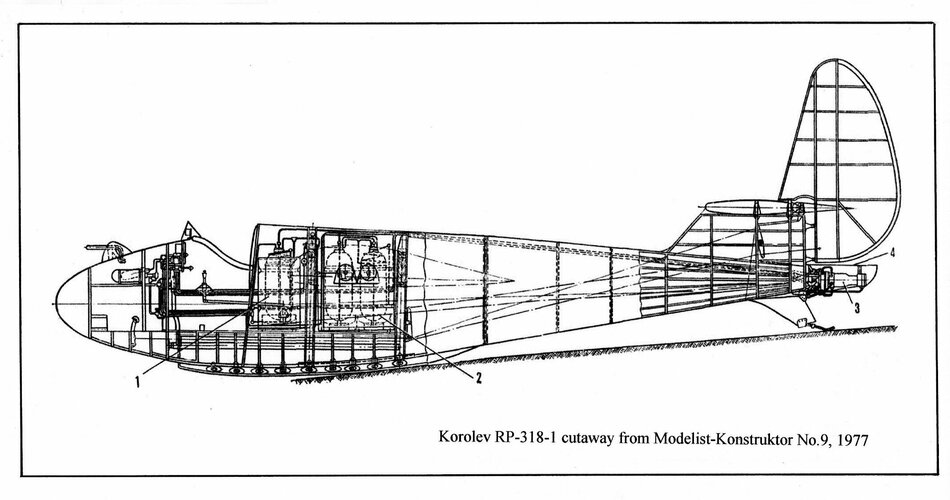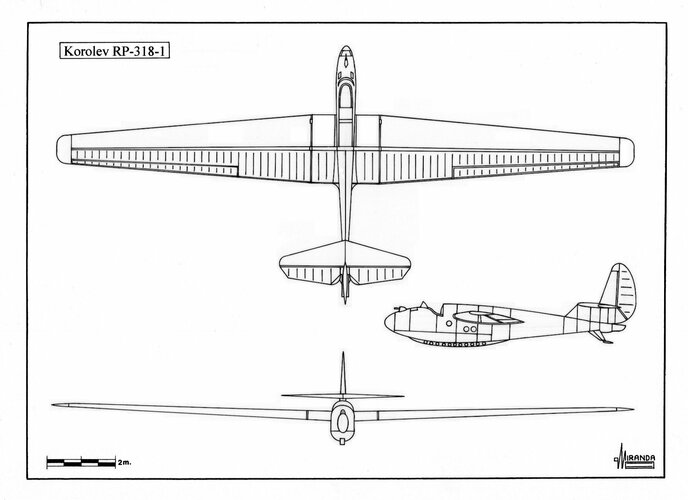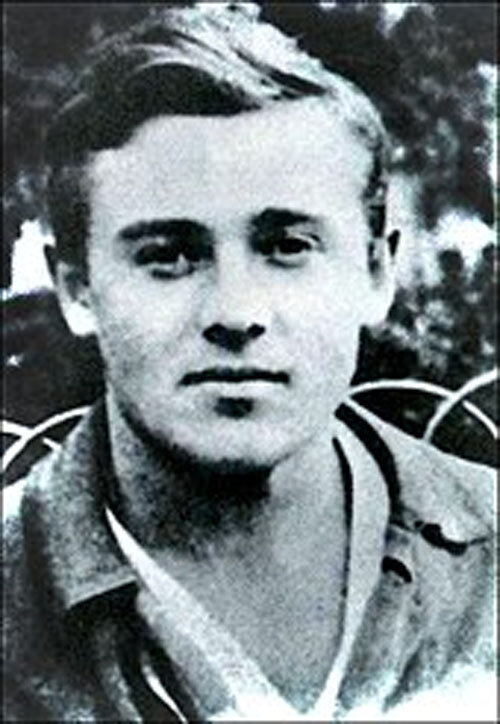LoveFromRussia
life is discovery
- Joined
- 16 September 2022
- Messages
- 20
- Reaction score
- 55
This information has been known to astronautics fans in Russia since 1990. Most Russians and Westerners don't know about it. The fact of the deliberate murder of Sergei Korolev was revealed in the Soviet official book of the “Life of Remarkable People” series in 1990. The first time Sergei Korolev was killed by Stalin was in 1938 in a concentration camp. The second time this happened on the operating table in 1966. Did the doctors not know about the consequences of the interrogation in the Gulag? The medical professors knew this very well.
1.
Romanov A.P. Korolev. – M.: Young Guard, 1990. – 479 p. (Life of Remarkable People)
Part four. Triumph. Chapter five. There are no barriers to human thought.
A book by TASS special correspondent A.P. Romanov, who repeatedly talked with S.P. Korolev. This publication was published a year before the collapse of the USSR, so it does not hide previously unpublicized episodes from the life of the Chief Designer - the camp, the sharashka, the intrigues of his enemies.
Sergei Pavlovich Korolev died during a long operation. It's hard to judge today. But it is unlikely that he seriously thought about the reasons for his many years of illness, completely trusting the doctors and especially such a famous surgeon, and even the country’s Minister of Health... Petrovsky, unfortunately, understood the whole tragedy of his patient’s situation only on the operating table. At that moment, he realized that he had acted recklessly, trusting the doctors’ conclusions without double-checking their diagnosis of “bleeding polyp.”
“Sarcoma, the most advanced sarcoma... damn it,” the surgeon repeated, unable to stop the bleeding, with trembling lips.
He did not enter the operating room, but Vishnevsky ran in, urgently summoned by the minister. Alexander Alexandrovich assessed the situation in an instant. But how could he help? In response to the surgeon’s silent question, he gave some advice. Finally, with difficulty, we managed to stop the bleeding. More or less, under these extreme conditions, the operation was completed. They went silently to calm down Nina Ivanovna, who was extremely agitated by such a long operation. But halfway through, the surgeons were stopped by the heart-rending voice of the anesthesiologist: “Heart... I can’t hear the heart...”
Petrovsky and Vishnevsky rushed to the operating room. Korolev’s heart could not bear the long hours of stress and stopped. Alexander Alexandrovich opened the chest cavity and began to massage the heart with his hands. All in vain. Vishnevsky stood next to his friend, looking at the deceased tensely, with pain in his eyes, not believing what had happened. With incredible clarity I remembered my long-ago meeting with Sergei Pavlovich and the words uttered by him: “We will work on an artificial heart.” And his joke: “The first is mine.”
- That's it, Boris Vasilyevich. This is the end,” Vishnevsky said dully.
Academician Petrovsky left silently. Alexander Alexandrovich continued to reason with himself: “Where does such gullibility and arrogance come from?.. Is unprofessional research acceptable... This means that it was carried out extremely poorly... And such improvidence,” the scientist thought painfully, looking around the operating room, in which, judging by In terms of equipment, you can only do the simplest operations... Ridiculous death. But death... is always absurd.”
Alexander Alexandrovich, saying goodbye to his friend, looked at the deceased again, touched his cold forehead with his hand, and covered his face with the sheet. Slouching, as if carrying an enormous burden of guilt on his shoulders, he went into the next room. There, Academician Petrovsky and his assistants were fussily finishing the drafting of a medical report, pondering every word. Vishnevsky’s eyes were clouded with tears; he looked, as if in a fog, at the paper handed to him for signature and read with difficulty:
“... Comrade S.P. Korolev was sick with sarcoma of the rectum. The operation was performed." “No, this is all somehow wrong, where were you before?..” Tears prevented me from watching. “...death occurred from heart failure (acute myocardial ischemia...).”
Vishnevsky looked reproachfully at the surgeon, wanted to say something, but he hastily averted his eyes to the side...
“Yes, there is nothing left to help Sergei Pavlovich,” Vishnevsky said out loud, without addressing anyone, with a sigh, almost to himself. And he put his signature. “We’ll figure it out later.”
2.

Who tortured Sergei Korolev
40 years have passed since the death of the outstanding creator of rocket and space technology Sergei Pavlovich Korolev
The operation, which was carried out in the surgical block of the Kremlin on January 14, 1966, immediately began with an overlay: anesthesiologists tried to give the patient anesthesia, but he could not open his mouth wide. They had to make an incision in the throat and insert a tube into the trachea. “I have no doubt,” academician Boris Petrovsky later recalled, “that during interrogations in 1938, Korolev’s jaws were broken. This circumstance forced us to perform a tracheotomy on him.” The Queen, who turned out to have cancer, was not saved by the operation. The general designer himself never told anyone about torture at Lubyanka.
Even Korolev’s wife, Nina Ivanovna, did not know about this. She only recalled that Sergei Pavlovich really could not open his mouth wide. And I was always very nervous before visiting the dentist. But Valentin Petrovich Glushko, another pioneer of rocket technology, the founder of the Soviet rocket engine industry, told us something. In 1938, Glushko, then a leading specialist at the Jet Research Institute (RNII), was involved in the same case with his colleague Korolev.
What exactly from this set S. Korolev was treated to is not important. It is enough that already during the first interrogation on the morning of June 28, 1938, investigator Shestakov called the future general designer a fascist bastard and, putting him on the conveyor belt, subjected him to a massacre together with Bykov. Two years later, on June 13, 1940, Korolev himself, in his letter to Stalin, described this with extreme restraint: “Shestakov and Bykov subjected me to physical repression and bullying.”
3.

 aif.ru
aif.ru
"Trifle" operation. Could modern doctors have saved Sergei Korolev?
Why couldn't the chief designer become a test pilot? What rare disease was he diagnosed with late in life? And who is to blame for the fact that Korolev died on the operating table?
"Trifle" operation
January 14, 1966. Moscow, Kremlin hospital. On the operating table is Sergei Korolev, the secret chief designer, the man who brought the first satellite and the first cosmonaut into space.
In 1938, Korolev was convicted and sent to a camp in Kolyma.
Later the case was reviewed. However, during one of the interrogations, Korolev’s jaw was broken. The consequences of this will become clear many years later on the operating table. Doctors will not be able to insert an endotracheal tube into Sergei Pavlovich - Korolev’s mouth almost did not open.
The operation did not go according to plan from the very beginning. Professor Petrovsky ordered to give the patient Korolev a light anesthesia - nitrous oxide, because all he had to do was remove the polyp. But the doctor felt the tumor and doubted it.
During the operation, a new histological analysis was done, which showed: the patient did not have a harmless polyp, it was angiosarcoma of the rectum.
When a repeat biopsy was taken during the operation, massive bleeding began; it was possible to stop it, as well as to remove the sarcoma, only by opening the abdominal cavity, and this is a serious operation that requires deep anesthesia and intubation. But then it turned out that Korolev’s mouth did not open.
It’s hard to believe, but the anesthesiologists did not know in advance that Korolev had problems with his jaw. Moreover, his short neck also made intubation difficult. All this speaks to one thing: most likely, Korolev did not have a preoperative anesthetic examination.
1.
Romanov A.P. Korolev. – M.: Young Guard, 1990. – 479 p. (Life of Remarkable People)
Part four. Triumph. Chapter five. There are no barriers to human thought.
A book by TASS special correspondent A.P. Romanov, who repeatedly talked with S.P. Korolev. This publication was published a year before the collapse of the USSR, so it does not hide previously unpublicized episodes from the life of the Chief Designer - the camp, the sharashka, the intrigues of his enemies.
Sergei Pavlovich Korolev died during a long operation. It's hard to judge today. But it is unlikely that he seriously thought about the reasons for his many years of illness, completely trusting the doctors and especially such a famous surgeon, and even the country’s Minister of Health... Petrovsky, unfortunately, understood the whole tragedy of his patient’s situation only on the operating table. At that moment, he realized that he had acted recklessly, trusting the doctors’ conclusions without double-checking their diagnosis of “bleeding polyp.”
“Sarcoma, the most advanced sarcoma... damn it,” the surgeon repeated, unable to stop the bleeding, with trembling lips.
He did not enter the operating room, but Vishnevsky ran in, urgently summoned by the minister. Alexander Alexandrovich assessed the situation in an instant. But how could he help? In response to the surgeon’s silent question, he gave some advice. Finally, with difficulty, we managed to stop the bleeding. More or less, under these extreme conditions, the operation was completed. They went silently to calm down Nina Ivanovna, who was extremely agitated by such a long operation. But halfway through, the surgeons were stopped by the heart-rending voice of the anesthesiologist: “Heart... I can’t hear the heart...”
Petrovsky and Vishnevsky rushed to the operating room. Korolev’s heart could not bear the long hours of stress and stopped. Alexander Alexandrovich opened the chest cavity and began to massage the heart with his hands. All in vain. Vishnevsky stood next to his friend, looking at the deceased tensely, with pain in his eyes, not believing what had happened. With incredible clarity I remembered my long-ago meeting with Sergei Pavlovich and the words uttered by him: “We will work on an artificial heart.” And his joke: “The first is mine.”
- That's it, Boris Vasilyevich. This is the end,” Vishnevsky said dully.
Academician Petrovsky left silently. Alexander Alexandrovich continued to reason with himself: “Where does such gullibility and arrogance come from?.. Is unprofessional research acceptable... This means that it was carried out extremely poorly... And such improvidence,” the scientist thought painfully, looking around the operating room, in which, judging by In terms of equipment, you can only do the simplest operations... Ridiculous death. But death... is always absurd.”
Alexander Alexandrovich, saying goodbye to his friend, looked at the deceased again, touched his cold forehead with his hand, and covered his face with the sheet. Slouching, as if carrying an enormous burden of guilt on his shoulders, he went into the next room. There, Academician Petrovsky and his assistants were fussily finishing the drafting of a medical report, pondering every word. Vishnevsky’s eyes were clouded with tears; he looked, as if in a fog, at the paper handed to him for signature and read with difficulty:
“... Comrade S.P. Korolev was sick with sarcoma of the rectum. The operation was performed." “No, this is all somehow wrong, where were you before?..” Tears prevented me from watching. “...death occurred from heart failure (acute myocardial ischemia...).”
Vishnevsky looked reproachfully at the surgeon, wanted to say something, but he hastily averted his eyes to the side...
“Yes, there is nothing left to help Sergei Pavlovich,” Vishnevsky said out loud, without addressing anyone, with a sigh, almost to himself. And he put his signature. “We’ll figure it out later.”
2.
Who tortured Sergei Korolev
40 years have passed since the death of the outstanding creator of rocket and space technology Sergei Pavlovich Korolev
The operation, which was carried out in the surgical block of the Kremlin on January 14, 1966, immediately began with an overlay: anesthesiologists tried to give the patient anesthesia, but he could not open his mouth wide. They had to make an incision in the throat and insert a tube into the trachea. “I have no doubt,” academician Boris Petrovsky later recalled, “that during interrogations in 1938, Korolev’s jaws were broken. This circumstance forced us to perform a tracheotomy on him.” The Queen, who turned out to have cancer, was not saved by the operation. The general designer himself never told anyone about torture at Lubyanka.
Even Korolev’s wife, Nina Ivanovna, did not know about this. She only recalled that Sergei Pavlovich really could not open his mouth wide. And I was always very nervous before visiting the dentist. But Valentin Petrovich Glushko, another pioneer of rocket technology, the founder of the Soviet rocket engine industry, told us something. In 1938, Glushko, then a leading specialist at the Jet Research Institute (RNII), was involved in the same case with his colleague Korolev.
What exactly from this set S. Korolev was treated to is not important. It is enough that already during the first interrogation on the morning of June 28, 1938, investigator Shestakov called the future general designer a fascist bastard and, putting him on the conveyor belt, subjected him to a massacre together with Bykov. Two years later, on June 13, 1940, Korolev himself, in his letter to Stalin, described this with extreme restraint: “Shestakov and Bykov subjected me to physical repression and bullying.”
3.

«Пустяковая» операция. Могли бы современные врачи спасти Сергея Королева?
Почему главный конструктор не мог стать лётчиком-испытателем? Какое редкое заболевание было диагностировано у него в конце жизни? И кто виноват в том, что Королёв умер на операционном столе?
"Trifle" operation. Could modern doctors have saved Sergei Korolev?
Why couldn't the chief designer become a test pilot? What rare disease was he diagnosed with late in life? And who is to blame for the fact that Korolev died on the operating table?
"Trifle" operation
January 14, 1966. Moscow, Kremlin hospital. On the operating table is Sergei Korolev, the secret chief designer, the man who brought the first satellite and the first cosmonaut into space.
In 1938, Korolev was convicted and sent to a camp in Kolyma.
Later the case was reviewed. However, during one of the interrogations, Korolev’s jaw was broken. The consequences of this will become clear many years later on the operating table. Doctors will not be able to insert an endotracheal tube into Sergei Pavlovich - Korolev’s mouth almost did not open.
The operation did not go according to plan from the very beginning. Professor Petrovsky ordered to give the patient Korolev a light anesthesia - nitrous oxide, because all he had to do was remove the polyp. But the doctor felt the tumor and doubted it.
During the operation, a new histological analysis was done, which showed: the patient did not have a harmless polyp, it was angiosarcoma of the rectum.
When a repeat biopsy was taken during the operation, massive bleeding began; it was possible to stop it, as well as to remove the sarcoma, only by opening the abdominal cavity, and this is a serious operation that requires deep anesthesia and intubation. But then it turned out that Korolev’s mouth did not open.
It’s hard to believe, but the anesthesiologists did not know in advance that Korolev had problems with his jaw. Moreover, his short neck also made intubation difficult. All this speaks to one thing: most likely, Korolev did not have a preoperative anesthetic examination.
Last edited:



